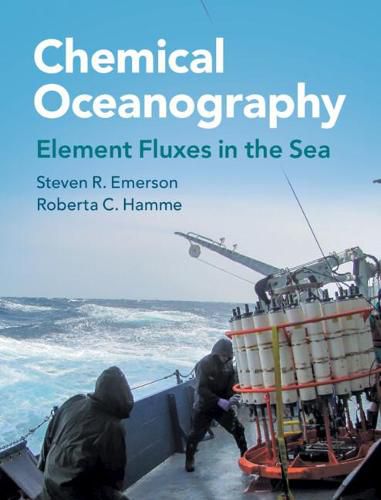Readings Newsletter
Become a Readings Member to make your shopping experience even easier.
Sign in or sign up for free!
You’re not far away from qualifying for FREE standard shipping within Australia
You’ve qualified for FREE standard shipping within Australia
The cart is loading…






Chemical Oceanography: Element Fluxes in the Sea focuses on the use of chemical distributions to understand mechanisms of physical, chemical, biological, and geological processes in the ocean. After an introduction describing observed chemical concentrations, chapters focus on using chemical tracers to determine fluxes on a variety of time scales. Long-term chemical cycles are dominated by exchanges between seawater and land, sediments, and underwater volcanoes. Biological and ocean mixing processes dominate internal chemical cycles that respond to changes on hundred- to thousand-year time scales. Stable and radioactive isotopes trace the fluxes of nutrients and carbon to quantify the rates and mechanisms of chemical cycles. Anthropogenic influences - which have grown to be of the same magnitude as some natural cycles - are a specific focus throughout the book. Discussion boxes and quantitative problems help instructors to deepen student learning. Appendices enhance the book’s utility as a reference text for students and researchers.
$9.00 standard shipping within Australia
FREE standard shipping within Australia for orders over $100.00
Express & International shipping calculated at checkout
Chemical Oceanography: Element Fluxes in the Sea focuses on the use of chemical distributions to understand mechanisms of physical, chemical, biological, and geological processes in the ocean. After an introduction describing observed chemical concentrations, chapters focus on using chemical tracers to determine fluxes on a variety of time scales. Long-term chemical cycles are dominated by exchanges between seawater and land, sediments, and underwater volcanoes. Biological and ocean mixing processes dominate internal chemical cycles that respond to changes on hundred- to thousand-year time scales. Stable and radioactive isotopes trace the fluxes of nutrients and carbon to quantify the rates and mechanisms of chemical cycles. Anthropogenic influences - which have grown to be of the same magnitude as some natural cycles - are a specific focus throughout the book. Discussion boxes and quantitative problems help instructors to deepen student learning. Appendices enhance the book’s utility as a reference text for students and researchers.